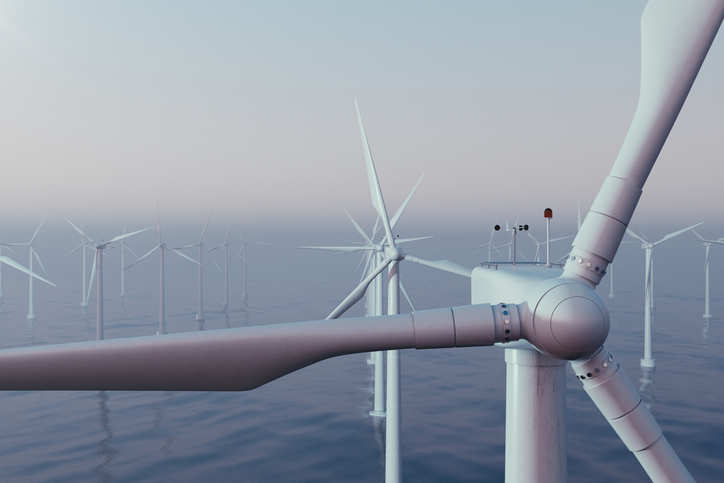Over the next seven years, India plans to install as much as 140 gigawatts (GW) of wind power capacity to source 50 percent of the country's power capacity from non-fossil energy sources by 2030. That presents huge opportunities for European suppliers, says wind energy expert Alok Kumar, director at consulting firm DNV GL in India.
First tender for offshore wind power in India
India's Ministry of Energy (MNRE) recently announced that India's first tender for leasing lots for offshore wind installation will be issued in July 2023.
The tender covers four lots in the Gulf of Mannar, off the coast of India's Tamil Nadu province. All four lots offer space for 1 GW of wind turbines. If an energy company wins the tender, it will be allowed to study the seabed, set up a wind farm and sell the electricity directly to customers.
India has so far focused mainly on onshore wind projects, as adjustments had to be made in the regulations of the various Indian states to allow offshore projects. As a result, India has been slow in terms of developing offshore wind energy projects, even though the country has a 7600-km coastline and significant potential to build offshore wind projects.
India is ambitious on green energy
Alok Kumar, director at consulting firm DNV GL in India.
While India is already currently generating 39.2 GW with onshore wind turbines and plans to double that capacity in the next four years, offshore wind development is only bursting forth this year. "This government is firmly committed to wind power development," Alok Kumar, country manager in India for DNV GL told me by phone. "In cooperation with the EU, over the past five years India, through the Facilitating Offshore Wind in India (FOWIND) consortium, has established a roadmap for the development of offshore wind farms in the coastlines of the states of Gujarat and Tamil Nadu. Because of this cooperation, there is great interest in the knowledge and skills of European companies."
Government support for wind energy
Since offshore wind power in India is more than four times more expensive than onshore wind power, the central government in New Delhi will subsidize offshore wind development. For onshore wind energy, the Indian government changed the policy in 2017. Before that, the Indian government signed a contract with a power supplier to purchase electricity at a fixed rate for a specified term (Power Purchase Agreement). Now, parties must bid for a tender to build a wind farm and the party offering power at the lowest price wins. This policy change initially caused tumult in the market, stagnation of new projects and the disappearance of small market players. "By now the craziness is over," says Kumar. "The development of new onshore wind farms is picking up. The price of electricity that initially halved has now stabilized at 75 percent of the price level."
Know-how from Europe
Through cooperation with the EU, Kumar said offshore wind farms in India will be designed according to the European model. "The production of wind turbines will take place entirely in India, but the know how will have to come from Europe. So there are many opportunities for European parties active in the chain. Some European parties have long noticed this. Take Fugro, for example. In the preparatory phase, they have mapped the Indian seabed to determine where wind turbines can be placed safely. But not all parties are taking the Indian market seriously yet. I expect that to change a lot this year."
Curious about the opportunities for your company in the Indian energy sector?


